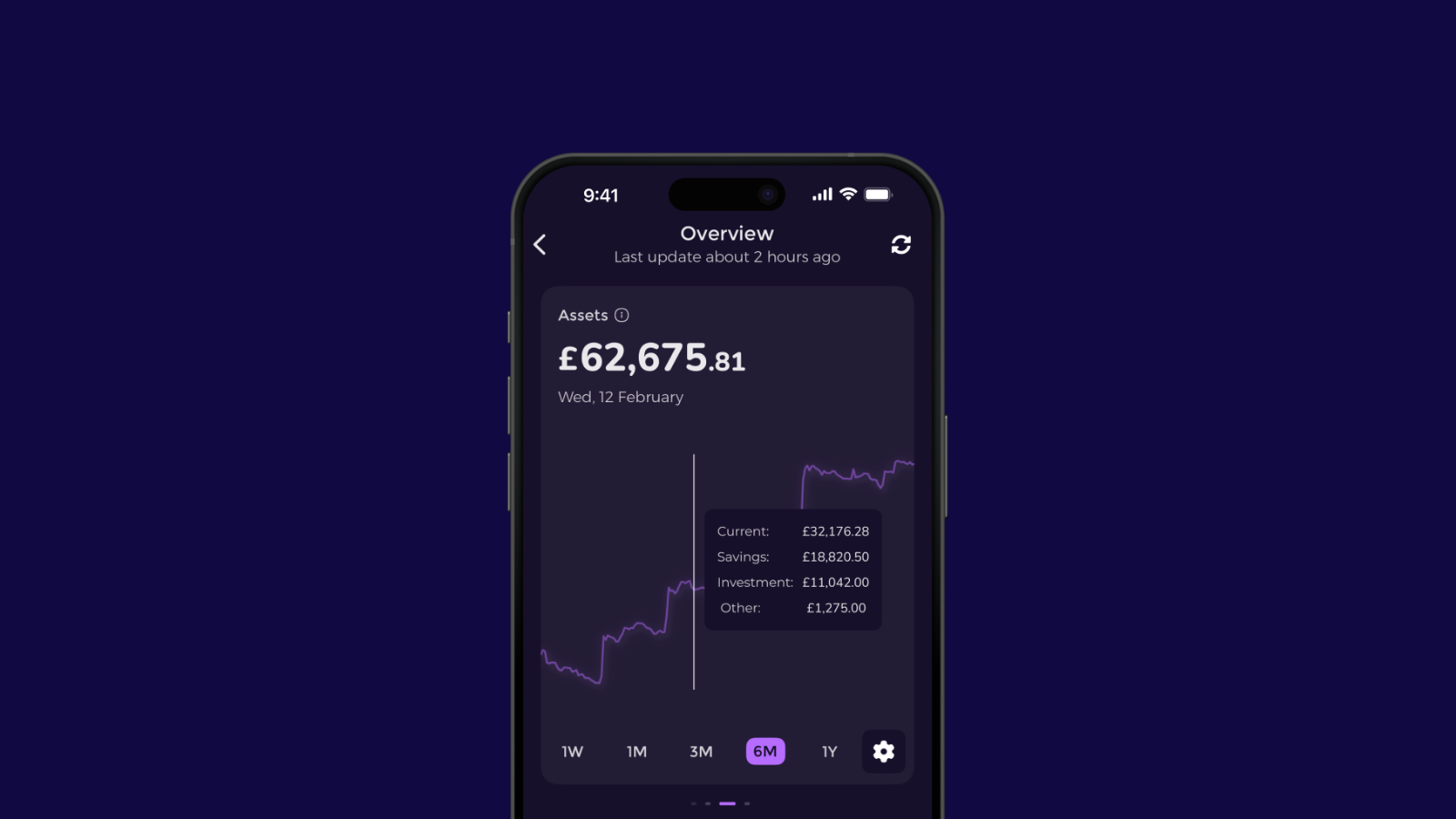FEATURED ARTICLE
This Big Guide Will Help You Compare Loans

Rebekah May
September 16, 2020 •8 min read
TABLE OF CONTENTS
What Is A Loan?
Loans: The Good And The Bad
What Happens If I Miss A Loan Payment?
Secured Loans:
Unsecured Loans:
Summary
There are many different types of loans. In this guide we’ll take you through each type of loan, helping you compare and understand the differences.
What Is A Loan?
A loan is a sum of money you borrow, with the expectation that you will pay the money back with added interest.
You might need a loan for buying a car, starting a business, debt consolidation or even making home improvements.
When thinking about what type of loan you should get, you first need to consider why you’re getting the loan, and how you plan to use the money.
You also need to consider the borrowing terms, mostly how long you have to pay the loan back. Make sure that whatever loan you take out, you’ll be able to afford the repayments.
Once you’ve compared loans and decided which is right for you, you apply through a broker or to a lender. After they’ve accepted your application, they will transfer the set amount of money into your bank account.
You then pay back the amount borrowed in monthly installments, until the balance is paid.
Choosing the right loan is therefore important because it can determine how much you pay back, as well as how easy the repayments are to manage.
Loans: The Good And The Bad
When it comes to loans there are pros and cons.
The pros of taking out a loan are that they’re a good option for long term borrowing. The interest rates on loans are fixed. You can borrow quite a lot of money. And, you can access it quickly.
However, the downside of taking out a loan is that repayments are often not very flexible. You might need to attach an asset to your loan for security reasons. And, unless you have a good credit rating you might not receive the best interest rates. There are also some pretty big consequences if you are unable to repay the loan in time.
What Happens If I Miss A Loan Payment?
If you miss a payment on your loan, you’ll be charged a fee. This fee depends on the type of loan you’ve taken out, as well as how much you’ve borrowed.
Miss multiple payments and you might be issued with a County Court Judgement, or have to declare yourself bankrupt.
Miss a loan payment and you also run the risk of damaging your credit history. This is why it is so important to compare loans and understand the small differences between each. Lenders have to report late, or missing payments to credit agencies. Your score will therefore be negatively affected if you aren’t able to make the repayments.
There are two main types of loans that we’re going to look at - secured and unsecured.
Secured Loans:
A secured loan is a type of loan where you have to attach an asset. An example of an asset could be a property you own, a car, or anything else of value.
Attaching an asset is a form of security for the loan company, or bank. If you fail to repay any of your loan, the asset can be repossessed and sold to make up for the money owed.
The borrowing limit for a secured loan is normally quite high. If you do not need to borrow that much money then an unsecured loan may be the better option for you.
The time you have to pay back a secured loan could be anywhere from 1 year to 35 years, depending on the type of loan you’ve taken out. The shorter the loan period, the cheaper it is, as you do not have to continue paying interest on the amount borrowed.

Unsecured Loans:
With an unsecured loan, you do not need to provide any security in the form of an asset, or your home for example. You borrow a set amount of money, and pay it back in installments over a certain period of time.
Most people prefer unsecured loans, because if something goes wrong and you are unable to repay, your personal belongings are not at risk.
With an unsecured loan you can normally borrow up to 25K. Most unsecured loans have to be paid back within 10 years.
Within secured and unsecured loans you have a few different types of loans...
1. Debt Consolidation Loans
Debt consolidation is one of the most common reasons people take out a loan. They let you take multiple debt repayments, across credit cards, store cards, overdrafts etc, and combine them into one payment plan.
This is useful for anyone that has more than one debt, as it can get confusing trying to keep on top of varying interest rates and balances due. By having only one monthly payment, it also makes it easier to forecast when you will have repaid all your debts.
If you find a loan with a lower interest rate than you are currently paying this could even reduce the amount of money you have to repay.
2. Personal Loans
Personal loans could be used for one off big expenses, like a holiday, a wedding or even to redecorate your home. With a personal loan you borrow a sum of money, and then pay a fixed amount back monthly.
Personal loans usually fall under the unsecured loan bracket. This means none of your assets are attached to the loan, which means if you can’t repay the money, you don’t risk any repossession.
Some people opt for personal loans over credit cards because the amount you can borrow is higher. If you’re borrowing a large amount of money through a loan, then the interest rate may also be lower than you’d get on a credit card.
However, if you’re only looking to borrow a small amount of money then you may be better off going down an alternative route. (Credit card, or an overdraft)
Most banks won’t lend you less than £1,000 so don’t be tempted to borrow more than you really need, or can afford.

3. Guarantor Loans
A guarantor loan is a type of loan you take out with another person, normally a member of your family.
If you take out this type of loan, the other person is responsible for making repayments if you are unable to. It will be your loan, but they will be listed as the guarantor.
These loans are normally best for people who have previously struggled with getting a loan. The main reason being poor, or little credit history.
Having a guarantor gives the bank, or lender, confidence that if you cannot personally make the repayments they’ll still get their money back. The guarantor therefore has to be over 18, have a bank account, and have a good credit history.

4. Bad Credit Loans
If you have poor credit, and are unable to find some willing to take out a guarantor loan with you, then a bad credit loan might be your next option.
With a bad credit loan, the lender looks at your current financial situation and decides whether you can afford the loan you’re applying for.
This is instead of the lender completing a credit check. Which means even if you have poor credit, or have missed repayments in the past, you might still be able to get a loan.
Bad credit loans do however fall under the “secured” type of loan, which means you will need to attach an asset of value to the loan. They also often come with high interest rates.
It is for this reason that you should only apply for a bad credit loan if you really need the money, and know that you can afford the monthly repayments.
If you take out a bad credit loan and successfully manage the money, this can improve your credit rating.
5. Payday Loans
A payday loan is a type of short-term loan that you can get from high street shops, or from the internet. They are called payday loans because they are designed so that you pay the money back before your next payday.
Payday loans are usually easy to access, but come with very high fees. Lenders normally charge a fee instead of an interest rate - for example if you borrow £100, there may be a £25 fee.
The most common way of repaying your payday loan is through bank transfer. When you first get the loan, you sign an agreement which says the lender can take the money from your bank account. You will see this listed as a CPA (continuous payment authority)
Like all loans, there are consequences if you do not manage to repay the loan in time. If you don’t have enough money in your account to repay the loan on the agreed date, the lender will need to continue asking your bank for the money. You’ll also be subject to a late payment penalty.
Before signing up to a payday loan, investigate if there are any other ways of solving this short-term problem. It is also important that you shop around for the best deals.
6. Student Loans
Student loan is a type of loan authorised by the government through a company called SLC (Student Loan Company).
They are only available to people participating in University, or College, courses and are designed to cover the cost of tuition fees.
Students can also access a maintenance loan to cover the costs of living away from home. The amount of money you can borrow depends on the course you’re taking, which city your course is in, and individual circumstances. Individual circumstances include a low income, if you’re disabled, or if you have children.
The money you’ve borrowed from SLC (plus the interest) does not have to be repaid until you’re earning a set amount of money. How much you repay each month depends on how much you earn, not how much you owe.
Many people do not think of a student loan as a traditional loan and instead, think of it as an educational tax. Your student loan also doesn’t appear on your credit report, although some financial providers may still ask you how much you have left to repay.
7. Car Finance Loans
If you need a helping hand to buy a car, then you might consider taking out a car finance loan.
There are three ways you could do this. You might choose to take out a loan big enough to be able to purchase the car in one transaction.
You might consider a hire purchase loan, which is when you agree to repay the car finance company in monthly installments. To start with you’ll be asked to put down a deposit, normally about 10% of the total value of the car. You then repay the balance in monthly installments. After the last installment, you then own the car.
Or you might consider a personal contract purchase. This is similar to the hire purchase loan, except your repayments are based on the value of the car's depreciation at the end of your contract. At the end of the contract, you can return the car. Or you can pay off the rest of the car's value so you then own it.

Summary
We’ve covered a whole host of different types of loans in this guide. Before you take out a loan, make sure you’ve shopped around for a loan that best suits your needs.
Head to the Borrow tab in the Emma app and click on our loans section. We’ll help you search over 30 different lenders and banks, comparing which loan is best for you and your needs. Simply enter the loan amount, the loan purpose, and the repayment terms. After completing some security questions we can help narrow down which lending partner can help you.
Got any questions about loans? Make sure you join the Emma Community. Or, reach out to us on Facebook, Instagram, or Twitter!
And if you want to learn more about how to use the Emma app then click through to “Eight Reasons You Need Emma Pro” or “How To Use Emma“.
Emma is a money management app that connects all your bank accounts to track your monthly spending and subscriptions. Emma will help you visualise and take control of your finances. Make sure you aren’t overspending, and show you practical steps to start budgeting effectively.
You may also like
Check out these related blog posts for more tips
© 2025 Emma Technologies Ltd. All Rights Reserved.
Emma is registered and incorporated in England and Wales.
Emma Technologies Ltd is an appointed representative of RiskSave Technologies Ltd, which is authorised and regulated by the Financial Conduct Authority (FRN 775330).
Payment services (Non MIFID or Deposit related products) for Emma Technologies Ltd are provided by The Currency Cloud Limited. Registered in England No. 06323311. Registered Office: Stewardship Building 1st Floor, 12 Steward Street London E1 6FQ. The Currency Cloud Limited is authorised by the Financial Conduct Authority under the Electronic Money Regulations 2011 for the issuing of electronic money (FRN: 900199). For more detail on how your money is protected please see here. You can also find Currency Cloud's Terms of Use here.
Emma Technologies is an Introducer Appointed Representative of Quint Group Limited and not a lender. Quint Group Limited is authorised and regulated by the Financial Conduct Authority (Firm Reference Number 669450). Monevo Limited is an Appointed Representative of TransUnion International UK Limited. TransUnion is authorised and regulated by the Financial Conduct Authority (Firm Reference Number 737740). Emma Technologies introduces customers first to Quint Group Limited, as a licensed credit broker, who then refers on to Monevo Limited.
Emma is registered with the Financial Conduct Authority under the Payment Services Regulations 2017 for the provision of payment services.
Financial Conduct Authority Reg Nr: 794952.
Company Registration Number: 10578464.
Data Protection Registration Number: ZA241546.
All testimonials, reviews, opinions or case studies presented on our website may not be indicative of all customers. Results may vary and customers agree to proceed at their own risk.
Resources: Cancel subscriptions, Cashback offers, Who charged me, Rent Reporting, Budgeting, Investment universe, Emma vs Moneyhub.
Featured cashback offers: Samsung, SimplyCook, NordVPN, Audible, M&S Homeware.









